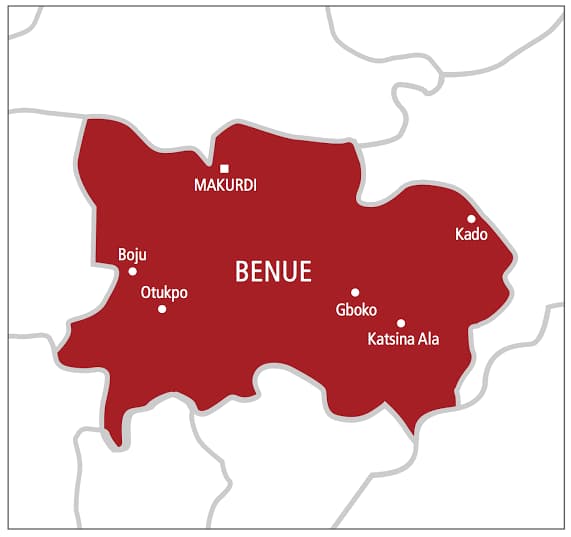On Monday, May 19, 2025, the bustling Nyanya-Keffi road in Abuja, Nigeria, became the scene of yet another devastating tragedy. A horrific accident on the Karu Bridge claimed numerous lives, marking the second fatal crash at this location within a mere 24 hours. This catastrophic event has reignited concerns about road safety on one of Nigeria’s critical federal highways, a route that connects the Federal Capital Territory (FCT) to Benue and Plateau states. As the nation mourns, questions about the causes, consequences, and potential solutions to this recurring nightmare loom large. In this blog post, we’ll explore the details of the accident, the broader context of road safety in Nigeria, and the urgent need for systemic change.
The Incident: A Grim Monday on Karu Bridge
The accident occurred on the Karu Bridge along the Nyanya-Keffi road, a vital artery for commuters traveling to and from Abuja. According to reports, the crash happened on Monday, May 19, 2025, though specific details about the time, the number of vehicles involved, or the exact cause remain scarce at this stage. What is clear, however, is the devastating toll: multiple sources indicate that many people are feared dead, with the precise number of casualties yet to be confirmed by authorities.
This was not an isolated incident. Just a day earlier, on Sunday evening, another catastrophic crash at the same location involved seven vehicles and resulted in significant loss of life. The proximity of these two accidents—both in time and location—has sent shockwaves through the community, amplifying fears about the safety of this heavily trafficked road. Eyewitness accounts and early reports suggest chaos at the scene, with emergency responders struggling to manage the aftermath and provide aid to victims.
The Nyanya-Keffi road, particularly the stretch around Karu Bridge, is notorious for its congestion and hazardous conditions. As a key route connecting Nigeria’s capital to neighboring states, it sees a constant flow of commercial buses, private cars, trucks, and pedestrians. The road’s significance makes these recurring tragedies all the more alarming, as they disrupt lives and expose systemic failures in Nigeria’s road safety infrastructure.
A Pattern of Tragedy: The Nyanya-Keffi Road’s Deadly Reputation
The Nyanya-Keffi road has earned a grim reputation as one of Nigeria’s most dangerous highways. Multiple fatal accidents have occurred on this route in 2025 alone, with the Karu Bridge emerging as a particularly deadly hotspot. The reasons for this are multifaceted, rooted in a combination of infrastructural deficiencies, human error, and lax enforcement of traffic regulations.
-
Poor Road Conditions: Many sections of the Nyanya-Keffi road suffer from inadequate maintenance. Potholes, uneven surfaces, and insufficient road markings can create hazardous driving conditions, especially during peak traffic hours or at night. The Karu Bridge, in particular, is a narrow stretch that struggles to accommodate the volume of vehicles, leading to bottlenecks and increased risk of collisions.
-
Overloading and Reckless Driving: Commercial vehicles, such as buses and trucks, are often overloaded with passengers or goods, compromising their stability and braking capabilities. Reckless driving behaviors—speeding, overtaking in dangerous conditions, or ignoring traffic signals—are also common culprits in accidents on this road.
The Bigger Picture: Nigeria’s Road Safety Crisis
The Nyanya-Keffi road accidents are not isolated incidents but part of a broader road safety crisis in Nigeria. According to the Federal Road Safety Corps, thousands of lives are lost annually in road accidents across the country, with causes ranging from poor road conditions to human error and inadequate vehicle maintenance. The World Health Organization estimates that Nigeria has one of the highest road traffic fatality rates in Africa, with over 20 deaths per 100,000 people.
Several factors contribute to this crisis:
-
Vehicle Maintenance: Many vehicles on Nigerian roads are poorly maintained, with issues like faulty brakes, worn-out tires, or malfunctioning lights contributing to accidents.
-
Driver Training: Inadequate driver training and licensing processes mean that some drivers lack the skills or knowledge to navigate complex road conditions safely.
-
Overcrowding and Urbanization: Rapid urbanization around cities like Abuja has led to increased traffic volumes, overwhelming existing infrastructure.
-
Policy and Enforcement Gaps: While agencies like the FRSC exist to promote road safety, their efforts are often hampered by limited resources, corruption, and inconsistent enforcement.
The Nyanya-Keffi road, as a critical federal highway, exemplifies these challenges. Its importance to Nigeria’s economy and connectivity makes its persistent dangers all the more unacceptable.
Join our Whatsapp channel to stay updated always!


